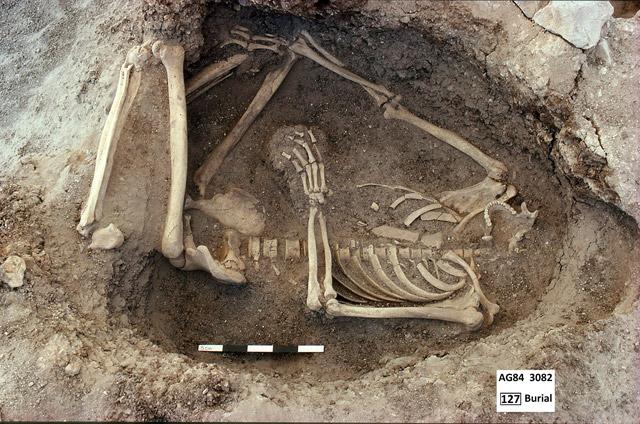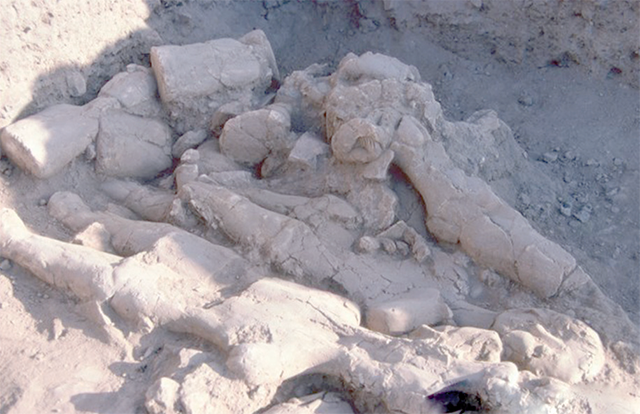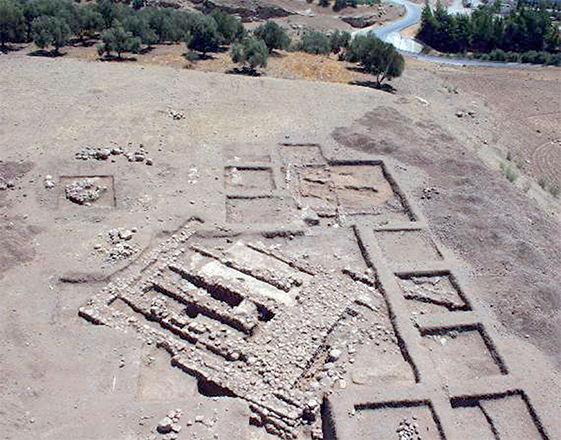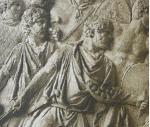You are here
American scholar examines ‘bizarre’ early human burial practices
By Saeb Rawashdeh - Apr 13,2017 - Last updated at Jul 13,2017

Subfloor burial at Ain Ghazal (Photo courtesy of Gary Rollefson)
AMMAN — Human burials throughout Jordan, Palestine, Syria and Lebanon present a pattern that is “bizarre” compared to modern practices, according to an American anthropologist.
“During the Middle Pre-Pottery Neolithic B, it appears that one person per generation was designated to be buried beneath the floor of the family house when he or she died; both males and females have been found under house floors, and ages at death range from about 14 years up to ages in the 50s,” Gary Rollefson from Whitman College, Washington state, noted.
The criteria for such burials are not known, but, according to the scholar, it is possible that one particular person had some connection with the family’s ancestors.
After a body had remained buried for a long enough time for the soft tissue to decay, the burial pit was reopened at the end where the head was located, the scholar explained.
“The skull was removed from the skeleton, then the burial pit was refilled and a brand new plaster floor was laid. The skull was carefully cleaned and then the front part was covered with lime plaster to recreate the face of the dead person and probably placed on display inside the house,” he pointed out.
The selection of the person for subfloor burial raises an important question: what happened to the other members of that generation when they died? If a family of parents and three to four children was typical at Ain Ghazal, this would mean that between 80-87 per cent of the burials of families were disposed of somewhere else, Rollefson argued.
Nowhere in the southern Levant have archaeologists found a Middle Pre-Pottery Neolithic B cemetery, so the information we have on the subfloor burials is all we have to characterise what the people were like and how healthy they may have been, he added.
When Ain Ghazal’s population appeared at the beginning of the Late Pre-Pottery Neolithic B, around 7,500 BC, roughly half of the new town consisted of “strangers” who did not share the same ancestral lines, Rollefson said, highlighting that, in Palestine and Jordan, at least, the practice of subfloor burials and the plastering of skulls appear to have stopped. And, while some small Late Pre-Pottery Neolithic B buildings may have functioned as shrines to honour ancestors, a new community-wide form of religion emerged.
That period might be the beginning of rudimentary forms of religion, according to the scholar.
“For the first time, relatively cult buildings/”temples” were built in which periodic ceremonies and rituals were performed on behalf of the entire community, not just for certain members of an ancestral line.”
Pre-Pottery Neolithic C burials were more generalised, the anthropologist noted. “People were interred outside houses in courtyards. For the first time, we witness the phenomenon of multiple skeletons in the same burial pit, indicating that they died at about the same time.”
Such a development leads to the suspicion that infectious diseases may have been endemic, Rollefson speculated, adding that the oldest cases of tuberculosis in the world were found at Ain Ghazal, including “two people who did not die of the disease, but who had been so badly affected by tuberculosis that unmistakable signs of the disease’s toll on the vertebral column made their lives miserable”.
“When the Yarmoukian period begins, we are at a loss when it comes to burial practices,” Rollefson stressed.
“The Yarmoukian period lasted almost a thousand years or more, and fewer than 25 human skeletons have been retrieved from Yarmoukian burials in Palestine and Jordan,” the anthropologist underlined.
At Ain Ghazal, the routine excavations seasons from 1982-1998 produced no burials from this period at all, and it was only during an emergency salvage excavation in January 2012 that the first Yarmoukian skeleton from Ain Ghazal was recovered from an abandoned Yarmoukian house.
If scientists estimate the population of Yarmoukian Ain Ghazal to have averaged 400 people in any year during its long duration, they could expect that approximately 30 people died each year, so at Ain Ghazal alone, 30,000 bodies are unaccounted for”, Rollefson pointed out.
Related Articles
AMMAN — Anthropologist Gary Rollefson’s nearly four-decade long research into the anthropology of prehistoric Levantine civilisations began
AMMAN — The Neolithic in the Levant was characterised by the first sedentary farming communities in the world and the transition from huntin
AMMAN — Located some 500 metres from the old Amman-Jerash road, Tell Abu Suwwan represents one of the Neolithic mega sites whose occupation















